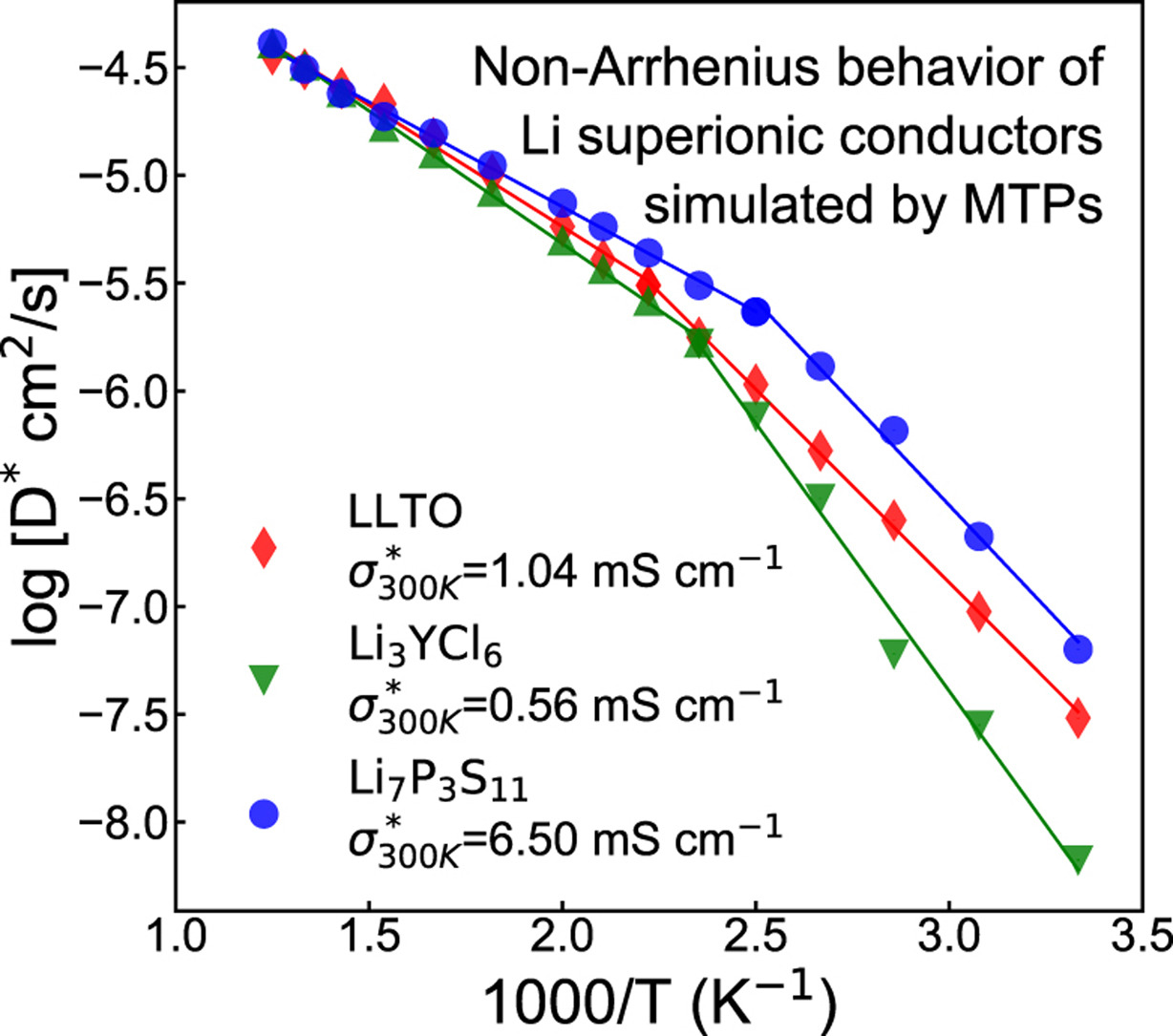Congratulations to Ji Qi on his paper on “Bridging the gap between simulated and experimental ionic conductivities in lithium superionic conductors” published in Materials Today Physics. Part of a “Special Issue on Solid state batteries: materials, characterizations, and understandings”, this is Ji’s first first-author paper. Lithium superionic conductors (LSCs) are of major importance as solid electrolytes for next-generation all-solid-state lithium-ion batteries. However, ab initio molecular dynamics (AIMD) often make wrong predictions of their ionic conductivities due to the short time scales and small cell sizes used. Here, we present a strategy to bridge this gap using machine learning interatomic potentials based on the moment tensor potential (MTP) formalism. We show that the DFT functional used to train the MTPs plays a critical role in the accuracy of the predictions. In particular, the van der Waals optB88 functional yield much more accurate lattice parameters, which in turn leads to accurate prediction of ionic conductivities and activation energies for Li0.33La0.56TiO3, Li3YCl6 and Li7P3S11. Nanosecond NPT MD simulations also reveal that all three lithium superionic conductors undergo a transition between two quasi-linear Arrhenius regimes at relatively low temperatures. This transition can be traced to an increase in the number and diversity of diffusion pathways, in some cases with a change in the dimensionality of diffusion. This work presents not only an approach to develop high accuracy MTPs, but also outlines the diffusion characteristics for LSCs which are otherwise inaccessible through ab initio computation.
Check out the work at this link.

